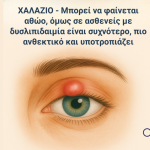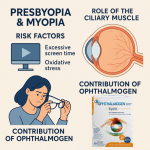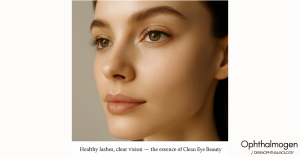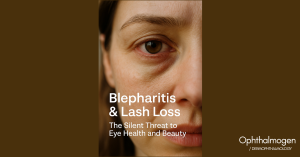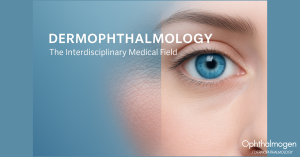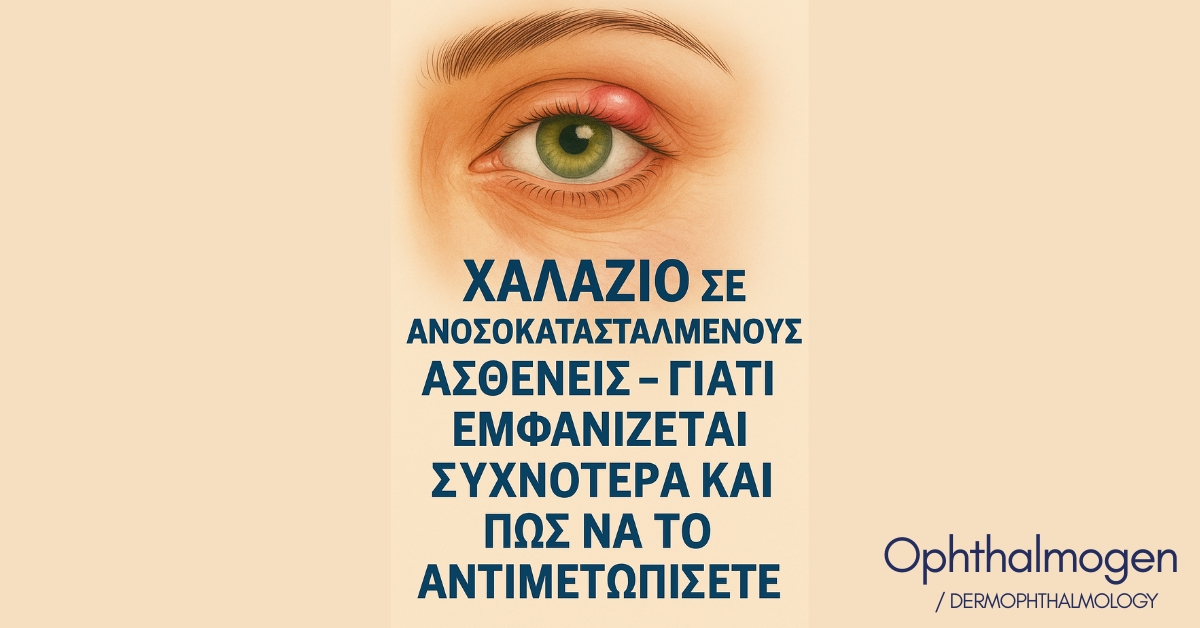
Introduction
Immunosuppression, whether caused by medications (corticosteroids, post-transplant immunosuppressants, chemotherapy) or medical conditions (HIV, autoimmune diseases), significantly weakens the body’s defenses.
One of the problems seen more frequently in this group is chalazion. While it may seem like a simple cyst on the eyelid, in immunosuppressed patients it can become persistent, infected, and lead to complications.
Why Immunosuppressed Patients Are at Increased Risk for Chalazion
- Reduced Immune Response
The immune system does not respond adequately → minor inflammations and infections persist.
- Higher Susceptibility to Infections
A simple chalazion can become infected and progress to an abscess.
- Medication Effects
- Corticosteroids → suppress local immune defense.
- Chemotherapy → delays tissue healing.
- Biologics → increase vulnerability to infections.
- Associated Conditions
Patients with HIV, cancer, or organ transplants often have additional skin lesions that also affect the eyelids.
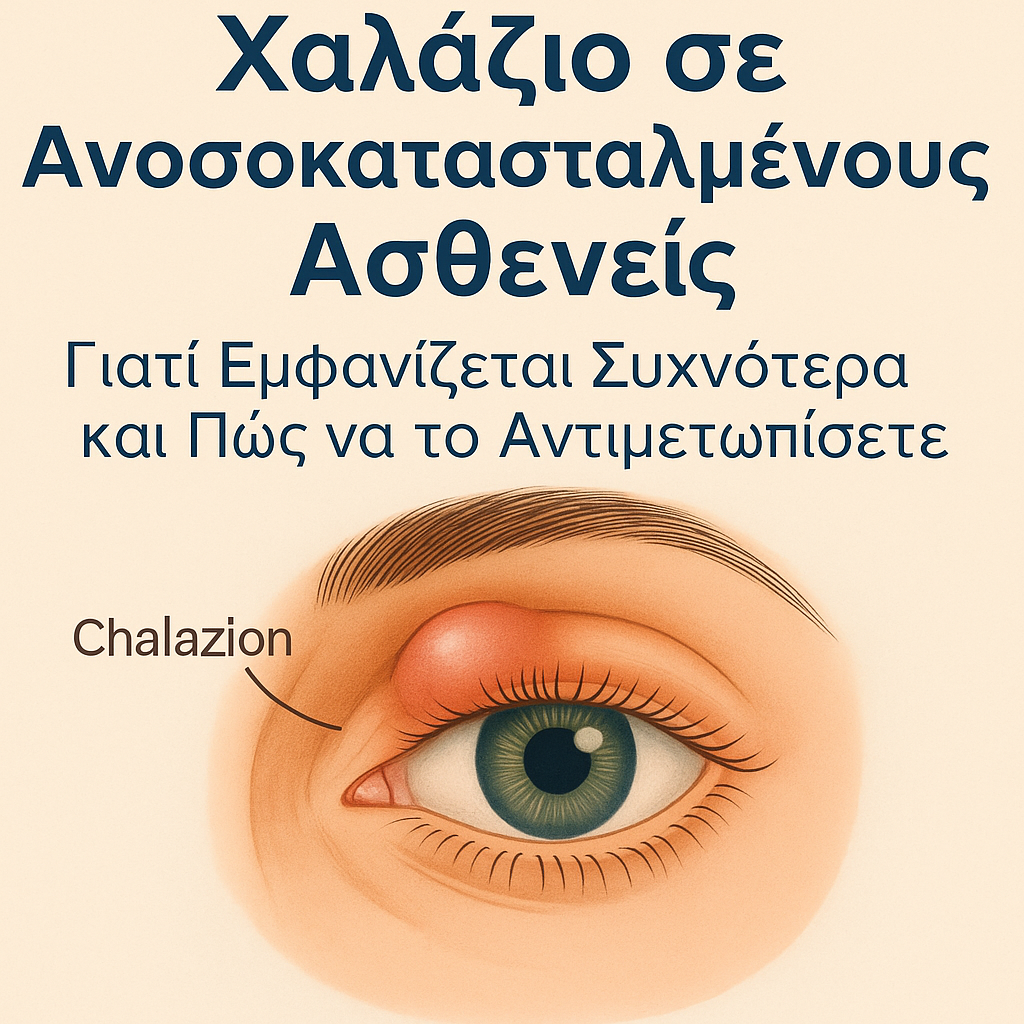
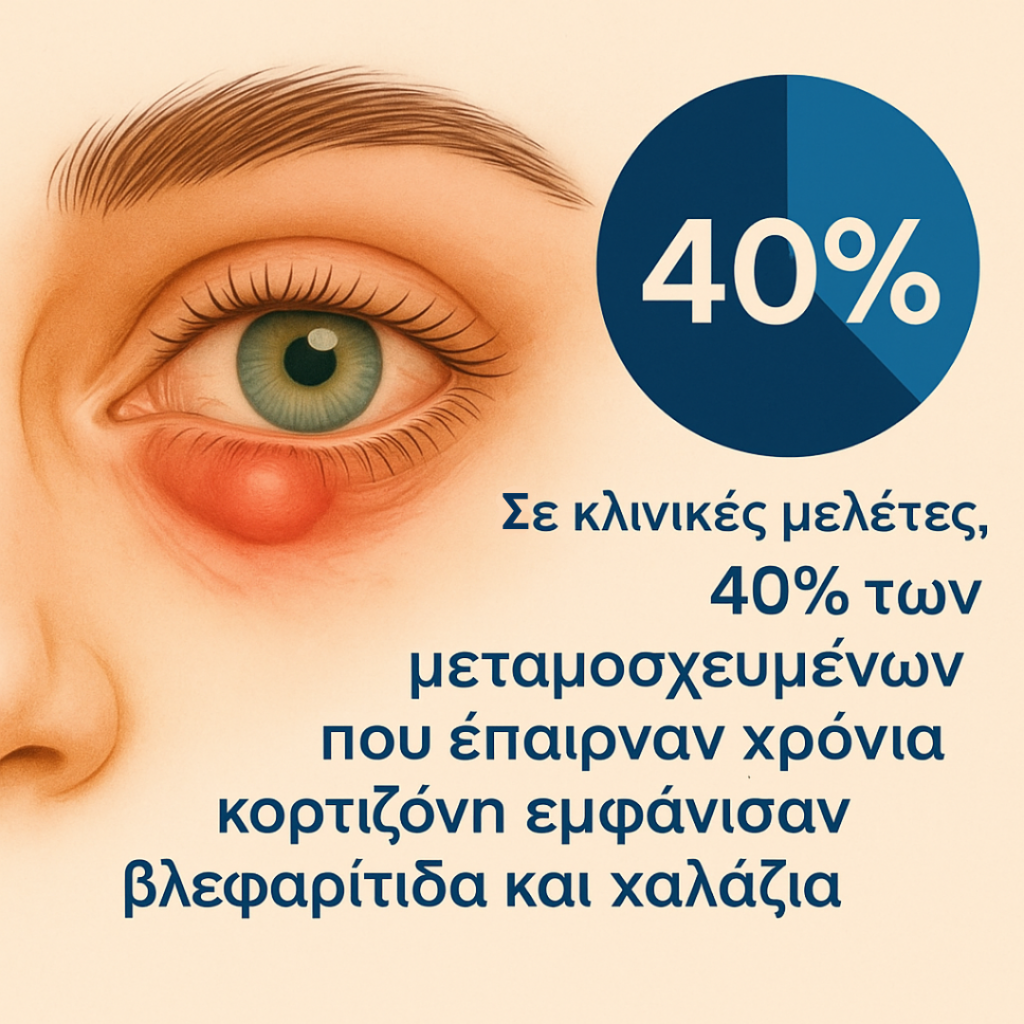
Statistics
- Immunosuppressed patients have a 2–3 times higher risk of developing chalazion.
- In clinical studies, 40% of transplant patients on chronic corticosteroids developed blepharitis and chalazia.
- HIV-positive patients often present with multiple recurrent chalazia.
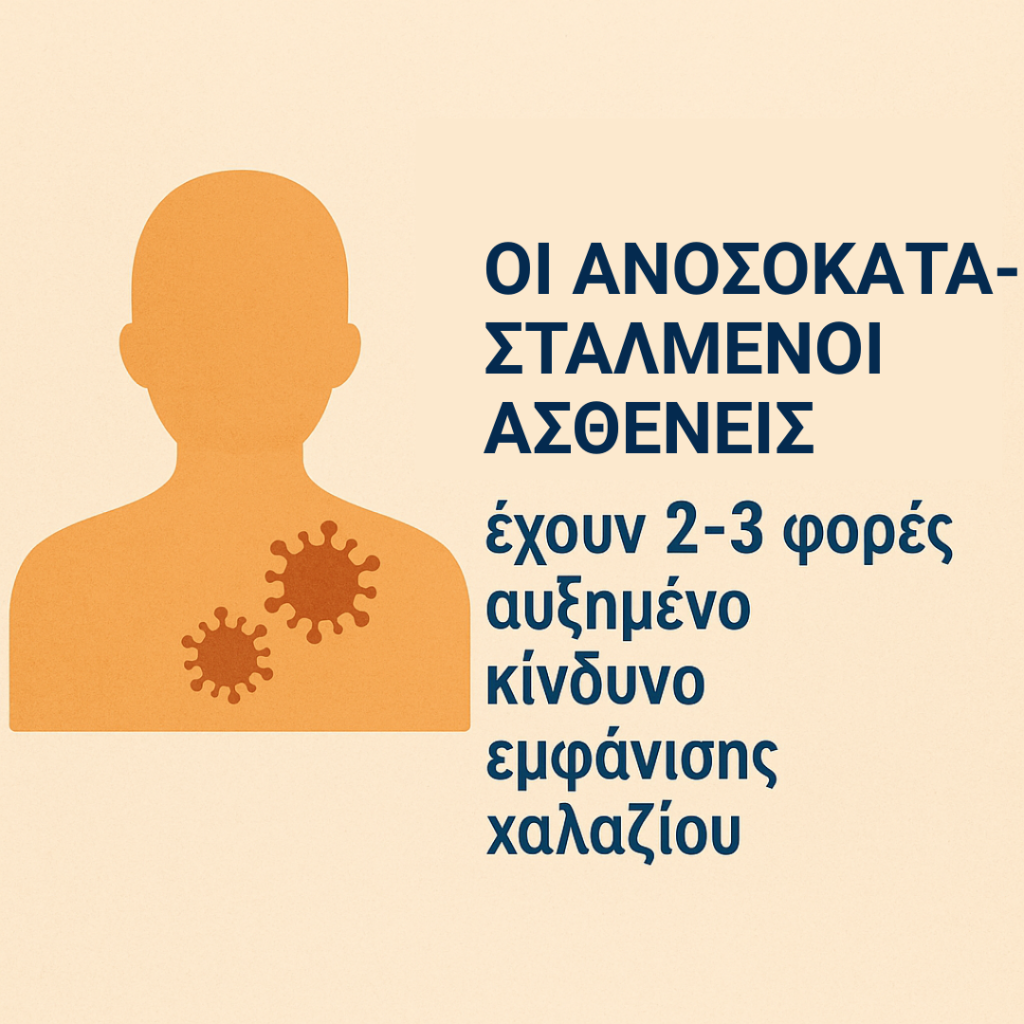
Symptoms in Immunosuppressed Patients
In this group, chalazion tends to:
- Persist and not resolve easily.
- Be associated with more pronounced swelling.
- Have a higher chance of secondary infection (redness, pain, pus).
- Sometimes cause greater visual disturbance.
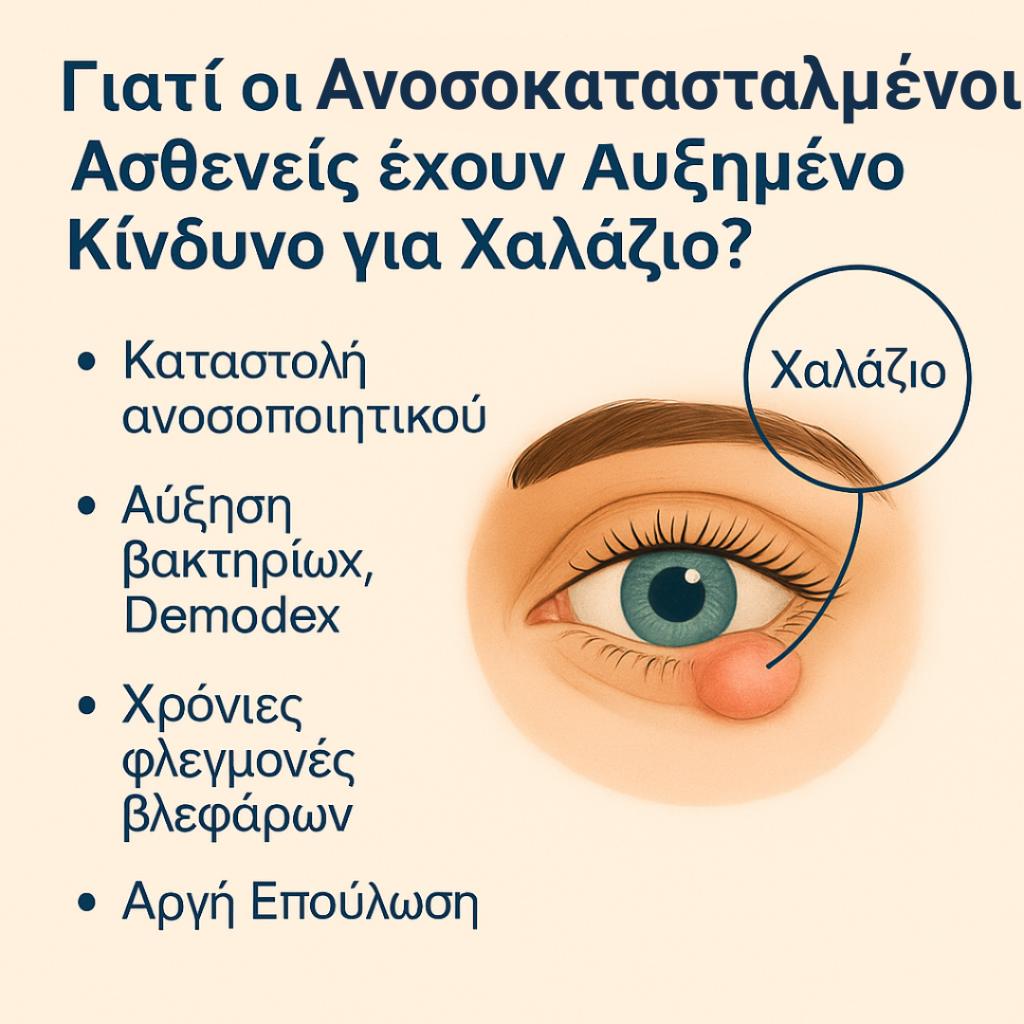
Complications
- Eyelid abscesses.
- Disseminated infections (in severe immunosuppression).
- Recurrence with multiple chalazia.
- Both cosmetic and functional problems.
Prevention – The Dermophthalmology Approach
Daily care is essential, and even more critical for immunosuppressed patients.
OphthalmogenEye10 – Single-Use Heat Mask, Maximum Safety
- Each pack is sterile and single-use.
- Provides 40°C for 20 minutes, melts thickened meibomian secretions.
- Safe for use in high-hygiene settings (hospital, post-transplant home care).
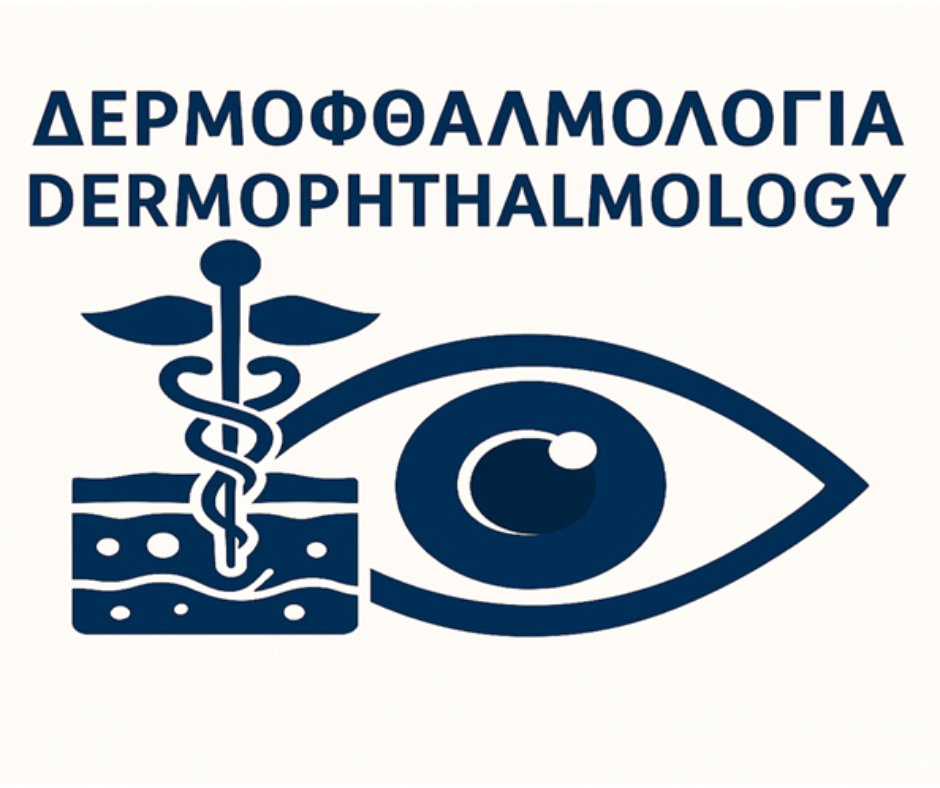
Ophthalmogen Gel – Massage, Hydration & Demodex Control
- Safe for gentle massage after heat therapy.
- Helps lipid outflow, relieves discomfort.
- Contains antiseptic and moisturizing agents.
- Supports control of Demodex, often increased in immunosuppressed patients.
Ophthalmogen Spray – Hydration & Antimicrobial Action
- Can be applied several times a day.
- Disinfects eyelids and eyelashes.
- Reduces the risk of secondary infection.
- Simultaneously hydrates and refreshes the area.
Supportive Care
- Naviblef: daily cleansing for microbes and excess lipids.
- Artificial Tears: Navitae Plus, Hylo-Comod, Systane, Thealoz, Visionlux Plus.
- Omega-3 supplements: Allvita Eyes, MacuShield, Solgar, Minami, Lamberts.
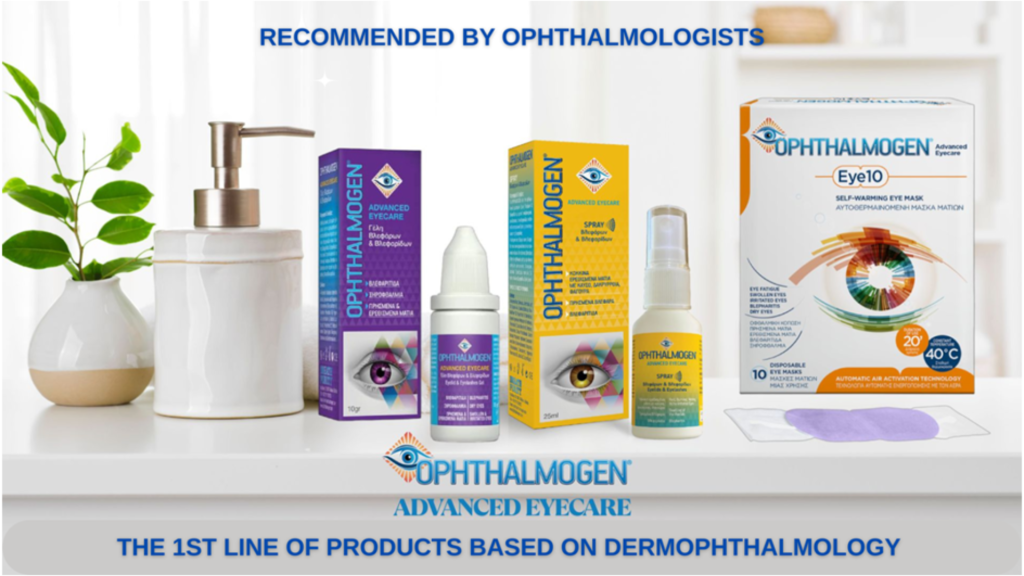
Medical Support
Ophthalmologists may also prescribe:
- Tobradex or Dexamytrex for inflammation/infection.
- Systemic antibiotics in infected chalazia.
- For HIV-positive or transplant patients: close monitoring to prevent complications.
Conclusion
Chalazion is more frequent and potentially more dangerous in immunosuppressed patients. It may recur, become infected, and heal slowly.
A comprehensive Dermophthalmology approach with Ophthalmogen (Eye10, Gel, Spray, Naviblef, MeiboEvacuators) combined with artificial tears and omega-3 supplements offers the safest and most effective prevention and management.
In immunosuppressed patients, eyelid hygiene is not just an aesthetic choice – it is a necessity for health and quality of life.
We combine Dermatology and Ophthalmology for you – see how at www.dermophthalmology.com

